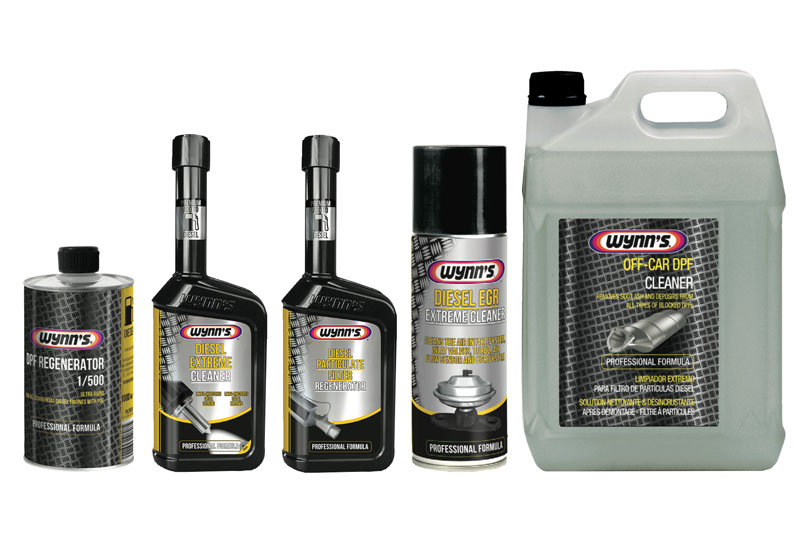
Wynn Oil runs through some basic DPF regeneration advice, and suggests some products that might come in handy.
Diesel Particulate Filters (DPFs) have been fitted to most diesel engines since about 2007, to help reduce harmful exhaust emissions and particulate matter in our atmosphere. The filter is positioned in the exhaust and traps soot particles, which are then burnt off at high temperatures, thus regenerating the filter. There are three types of regeneration:
1. Passive regeneration – takes place during normal driving, but only when the exhaust reaches high temperatures during a period of continuous driving with the RPM above 2000.
2. Active regeneration – is instigated by the vehicle’s ECU when the soot loading has increased above a threshold of about 45% in the filter. The vehicle’s ECU detects the build-up of particulates, and under the correct driving conditions injects extra fuel post combustion, increasing the exhaust temperature and burning off soot particles.
3. Forced regeneration – is when the filter can no longer be regenerated by the above two methods and the filter will need to be forcibly regenerated by a workshop.
Unfortunately for drivers, there comes a time when filters cannot be regenerated by the above three methods. This will normally be because the filter is heavily contaminated with soot, ash and other deposits. At this stage, the filter will either need to be replaced or removed from the vehicle and cleaned.
Why does the DPF dashboard light come on?
There are several possible reasons for this:
1. Car used mainly for short journeys or commuting – exhaust does not get hot enough.
2. Incorrect engine oil used. Vehicles equipped with a DPF should use a low SAPS oil.
3. A sticking EGR Valve can result in incomplete combustion and higher exhaust emissions.
4. A dirty fuel system will not operate efficiently and will add more soot to the filter.
5. A failing turbo can lead to oil contamination in the filter.
6. Driving with a low fuel tank. Regeneration will not take place with less than a 1⁄4 of a tank of fuel.
Wynn Oil has treatments to help regenerate DPFs at all stages of contamination.
On-car, in-tank treatments
If the warning light has illuminated, the first- choice solution should always be Wynn’s Diesel Particulate Filter Regenerator, says the company. This product is a simple-to-use tank treatment that lowers the temperature at which soot particles burn off. This helps to burn off the soot more easily, regenerating the filter at a faster rate.
Simply add one bottle of Wynn’s Professional Range Diesel Particulate Filter Regenerator to at least half a tank of fuel. The vehicle should then be driven in-line with the vehicle manufacturer’s instructions (for example, 15 minutes at 2500rpm) to burn off the deposits. For large commercial vehicles or to treat bulk fuel storage tanks, Wynn’s Diesel Particulate Filter Cleaner is now available in a concentrated 1L tin that will treat up to 500L of fuel.
Off-car cleaning
If the filter is too heavily blocked and standard regeneration methods fail, then the filter will need to be removed for manual cleaning or replacement.
Wynn’s Off Car DPF Cleaner uses a special blend of chemicals to safely clean away deposits and restore the DPF in as little as 90 minutes, without risking damage to the filter. This means the workshop can clean the contaminated filter in-house, completing the job and returning the customer’s vehicle the same day – and, importantly, retaining the profit for the business rather than outsourcing the work.









